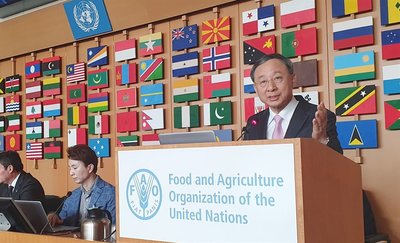Earlier this year, the Food and Agriculture Organization of the United Nations (FAO) held a high-level seminar on digital agriculture transformation and people from all around the world participated as well as contributed to it. Considering the relevance of the event and the connections with IoT, we naturally could not miss out on it. The General Director, Graziano da Silva, opened the event by mentioning how profoundly digital technologies change not only agricultural practices but the overall food system. We could not agree more!
The celebration of this event coincided with the official release of the FAO report “Digital Technologies in Agriculture and Rural Areas” which encompasses a worldwide review of the state of the art. One keynote speech explained the challenges and extraordinary possibilities of 5G implementation and further called on the FAO to develop “LEPP”. It refers to a system aimed at the early prevention of livestock disease since a Big Data analysis clearly indicated that contagious diseases are primarily passed on by logistic services between farms. Afterwards an exchange of interesting ideas erupted, and we took the liberty to share some of them with you:
- Data protection, ownership and ethical use of data is a prerequisite for protecting farmers and enabling markets;
- Strengthening smallholders can only be achieved by ensuring extensive rural connectivity;
- International agricultural communities and global trade need an appropriate policy framework and standards to facilitate digital agriculture;
- Innovative technologies need a recurrent impact assessment regarding their risks and opportunities for the digital transformation of the agri-food sector;
- Digital innovations help to tackle climate change by boosting the agro-meteorological and agro-climatological capacity in developing countries;
- Digital innovations require an ecosystem which fosters literacy, capacity and partnerships to develop local youth enterprises.
The event then took a closer look at regional differences. Our key take-aways for Asia were China’s rural internet proliferation, declaring 98% coverage. They achieved that through confidence in IoT, e-commerce, smart phones and the establishment of a powerful network of 272.000 stations, providing information about technologies or legal concerns to farmers via a “hotline”. Since the 80ies, India relies on supercomputation for weather forecasting as a basis for insurance systems. They are further developing a national platform to monitor and assess agricultural prices and have released already 30 applications for different crops, animal breeding or precision agriculture. For instance, the PRIDE system created by TATA gives services to more than 2,2 million Indian farmers. It advises in growing sessions and commercialisation. As farmers need to gather in groups of 1000 people it moreover facilitates peer-to-peer learning. Indonesia is currently working together with its agriculture universities to foster artificial intelligence for the agro-industry and smart agro-logistic.
For Africa, Michael Hailu from CTA agency released “The Digitalization of African Agriculture Report”. It is a compiled study consisting of 430 expert surveys. Since Orange has a large presence in Africa due to money exchange services or environmental warning systems, they insisted on the distribution of 2G-3G networks to digitalise developing countries. Microsoft on the other hand is deploying its iniative called "TV White Space" in Kenia and South Africa using unoccupied TV channels. If you want to know more about how this technology works, we recently wrote an article about it.
In North America, the USA declares its digital leadership by reaching 90% of its farmers with digital technologies. ACRECY, for instance, is a vast programme where farmers can voluntarily upload plant level information (what, where and when) to a cloud-based system. To incentivise the farmers' participation, benefits include different public programmes or insurances. Their big players in the private sector are of course not standing on the sidelines either. John Deere and Claas are both heavily supporting the development of various digital services.
In Europe, COPA-COGECA outlined the effort made to set certain rules about data exchange. Together with other European organisations they issued a "Code of Conduct on Agricultural Data Sharing by Contractual Agreement". After attending this enlightening seminar, we are confident that the future of agriculture is going to look bright all over the world!